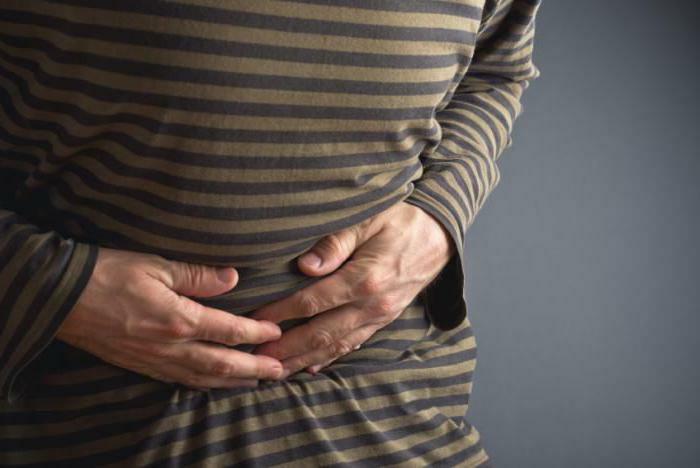Diarrhea with foam: the causes and methods of treatment
At least once in a life any person faced such problem, as diarrhea which in another way is called as a diarrhea. A chair of liquid consistency is several times a day and can be mixed with foam, blood or mucus. A short-lived diarrhea caused by the use of poor-quality products, fatty foods or simply overeating, often passes on its own without serious treatment. But if diarrhea with foam, the reasons for this can be serious, so an appropriate approach and adequate treatment is required.
Symptoms of a disease

Dyspepsia is a functional disorder that is termed dyspepsia. It is manifested by foamy diarrhea, which has the following symptoms:
- rumbling in the abdomen;
- feces contain fibers of undigested food, starch grains, gas bubbles;
- frequent stool with foam, mainly with an acidic odor;
- no pain during bowel movement.
Diarrhea with foam: causes of

Foamy stools appear for various reasons, in which there is a disruption of the digestion of food in the intestine. It can be:
- overeating;
- excessive use of alcohol and other beverages;
- stressful situations;
- use of coarse, fatty foods, as well as stale foods;
- infectious or inflammatory bowel disease;
- intolerance to any medications or products;
- diseases of other organs of the digestive tract( hepatitis, gastritis, pancreatitis, etc.).
Foamy stools in adults
Sometimes, such a disease can be the only manifestation of bowel disease, but more often diarrhea with foam in an adult is accompanied by symptoms that indicate a general intoxication:
- rise in body temperature;
- nausea and vomiting;
- appearance of rash;
- presence in the stool of mucus, foam, blood;
- abdominal pain.

If these symptoms persist for more than two days, it is recommended that you consult a doctor. Intoxication and dehydration of the body can cause a sharp deterioration in well-being, a drop in pressure and a malfunction of the heart. Diarrhea with foam is especially dangerous for debilitated and elderly people.
Frothy stools in children

If a small child is fed only breast milk, the appearance of foamy diarrhea in him is due to the reaction to the food insensitivity that was eaten by the mother. Diarrhea with foam in a child for a day can be from 8 to 12 times. Cal in this case is often green and contains blood, foam, mucus.
Lactose deficiency

Diarrhea with foam in the baby usually occurs as a result of a conflict between the anterior and posterior breast milk. Most often, a small child sucks in front milk, because it is easiest to get it, and the back remains in the chest. In this case, a large amount of lactose babe digests with difficulty, which leads to lactose deficiency. It appears as follows:
- deterioration of the child's well-being;
- liquid frothy stool with an unpleasant acidic odor;
- nausea, vomiting;
- increased body temperature.
Lactose deficiency can be congenital, and it is associated with the inability of the pancreas to produce lactose. It is revealed by the results of the analysis of feces.
It happens that the baby is feeling fine, but at the same time he often has a bloating, there are colic and foamy diarrhea. The kid can be active, eat with appetite and gain weight well. With lactose deficiency it is necessary to revise the nutrition of the child. When he is on artificial feeding, it is best to use sour-milk or low-lactose mixtures.
Celiac disease
Recently, doctors often diagnose "celiac disease" in small children. With this disease in the body there are no enzymes that break down the gluten protein found in cereals( barley, oats, wheat).In this case, the child may also have yellow diarrhea with foam, so it is recommended to observe a special gluten-free diet.
Dysbacteriosis and allergic reaction
Such an ailment can provoke frothy diarrhea. There is a dysbacteriosis for various reasons. For example, after taking antibiotics that disrupt the balance of the intestinal microflora. This pathology is very difficult to treat.
Foam stools can also be caused by an allergic reaction if a person consumes foods that irritate the stomach or intestines. In this case, it is recommended to consult a specialist as soon as possible so that he can determine the product that caused such a reaction.
Inflammation of the gastrointestinal tract
These diseases include ulcerative colitis, enterocolitis and ulcers. The first sign of these ailments is a frothy white chair. If you do not pay attention to it, then the disease will begin to progress.
First aid for diarrhea
If a person suddenly catches diarrhea, then it is unlikely that he will consult a doctor with this problem. Most people usually try to cure themselves. If the frothy stool poses no threat, the following recommendations can be used:
- from the diet should exclude fatty, dairy and sweet foods;
- drink a lot of fluid to support the body's mineral balance, in addition, water helps to remove harmful decomposition products;
- it is recommended to eat astringent food, for example, a decoction of rice;
- can be made an enema with activated charcoal or decoction of chamomile to clear the intestines of poisons.
Ways to treat
If an adult or child has diarrhea with foam: what to do in this case? It is best to consult a doctor to avoid dehydration. In the case of the use of medicinal antibacterial drugs, their admission should be agreed with a specialist, especially if it concerns this child.

Thus, the treatment of foamy stools is carried out by the following drugs:
- etiotropic therapy with drugs that relieve inflammation in the intestines - cephalosporins or antibiotics;
- antidiarrheal drugs that suppress intestinal motility: Imodium, Loperamide( it is forbidden to take children under 12 years old);
- adsorbents, removing toxins in 5-7 days( Enterosgel, Smecta, Atoxil);
- probiotics containing living bacteria that restore intestinal microflora( "Bifiform", "Linex", etc.);
- enzymes that help restore digestion( Pancreatin, Festal, Pansinorm).
If the disease was caused by an allergic reaction, in this case it is necessary to exclude the irritant from the diet. To normalize digestion, you should take antihistamines.
Features of the diet
To diarrhea with foam passed as quickly as possible, treatment should be combined with dieting. If you exclude from the diet some products, you can do without drugs. At the first manifestations of the disease it is recommended to abandon heavy and fatty foods, exotic fruits and dairy products. A diet based on rice boiled on water without salt and fat is considered very effective. Also a useful product is rye bread. Of the fruits are allowed only bananas. It is important to comply with the water balance. Drink a lot and it is best to make teas from lime, raspberry, chamomile, and also non-carbonated mineral alkaline water.

The diet is aimed at restoring the intestine, so you need to exclude products that irritate it. If such recommendations are followed, the chair will be normalized after a while. To avoid recurrence of the disease, you should abandon the sharp and unusual dishes, and return to the usual diet should be gradually.
Conclusion
Many people do not take diarrhea seriously, but one should not pay attention to this ailment. Diarrhea with foam requires mandatory examination of the body, as it can be a symptom of many serious diseases. In no case can you do self-medication, because the likelihood of complications is high. Compliance with the diet also brings good results in the treatment of loose stools.
